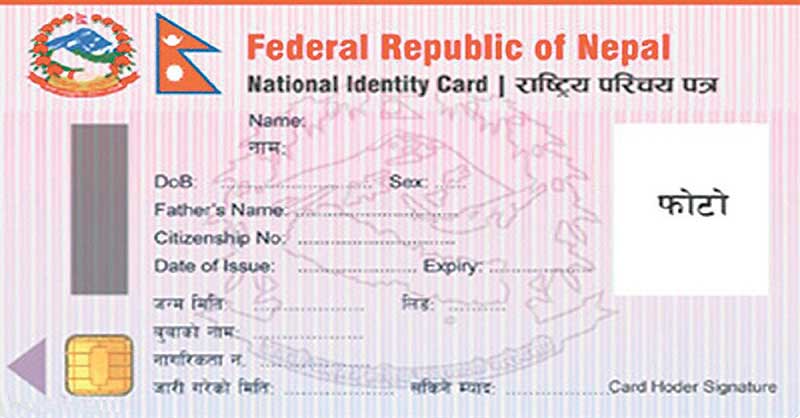
Importance of the National Identity Card (Rastriya Parichaya Patra)
In the past, there have been numerous incidents involving the forgery of various government documents, amendments to details on citizenship certificates, and the acquisition of dual citizenship. These fraudulent activities highlighted the need for a reliable government identity card to ensure that illegal activities could not be carried out using forged documents and that unauthorized benefits could not be obtained. In this context, the issuance of the National Identity Card (Rastriya Parichaya Patra) aims to discourage all types of irregularities. Additionally, the concept of the National Identity Card has been introduced to ensure that citizens do not face any hassles in receiving services and facilities provided by the state.
The Role of Biometric Data
The National Identity Card, equipped with biometric data, is intended to be mandatorily used in connection with public services. From the upcoming fiscal year 2081/82 BS, it has been arranged that the number of the National Identity Card must be presented for various purposes such as receiving social security allowances provided by the state, banking purposes, health insurance, permanent account numbers, and property registration, according to the National Identity Card and Registration Department.
Historical Background
The Government of Nepal, through its annual policy, program, and budget statement for 2066/67 BS, announced the arrangement of a photo-equipped biometric smart card for all Nepali citizens, which could also be used in general elections. This is also the digital identity of citizens. To implement this arrangement, the National Identity Card Management Center was established in 2067 BS as a separate central body under the Ministry of Home Affairs. However, in 2075 BS, the center was integrated with the Central Registration Department under the Ministry of Federal Affairs and General Administration to form the National Identity Card and Registration Department. The digital system of identity verification in the National Identity Card makes it reliable and modern.
Strategic Implementation
To systematically advance the distribution of National Identity Cards, the strategic plan for National Identity Card Management, 2075 BS, and the procedures for registering details of Nepali citizens who have obtained citizenship and distributing National Identity Cards, 2075 BS, were followed. After the enactment of the 'National Identity Card and Registration Act, 2076 BS,' the process moved forward legally. The program began by distributing the first card to 101-year-old Bhagwati Devi Bhandari from Panchthar district in Fiscal Year 2075/76 BS and was expanded nationwide. However, the enthusiasm among citizens has not been as high as the government's target, as expressed by related state bodies. According to the department, from the upcoming Fiscal Year 2081/82 BS, presenting a copy of the National Identity Card will be sufficient where a citizenship certificate was previously required.
Data Collection and Distribution
With the mandatory use of the National Identity Card, all district administration offices, 54 area administration offices, and one border administration office have been working on data entry. Residents of Kathmandu can also submit the necessary documents and fill in their details. Despite the government's enthusiasm, the lack of citizens visiting district administration offices across the country to collect their National Identity Cards indicates a lack of awareness. According to the department, of the 3,754,334 cards printed so far, only 630,620 cards have been distributed. Data for 14.9 million individuals have been collected to date. The department's proactive campaign to educate citizens about the card's usefulness and its mandatory use in service delivery is seen positively.
Multifaceted Benefits
Not only does the National Identity Card facilitate access to services, but it also includes a QR code that can scan and display all details of a person's financial and business transactions. From the upcoming month of Shrawan, the renewal of social security allowances and pensions will be carried out through biometric verification, as decided by the department. Approximately NPR 77 billion is spent annually for the social security allowance and pensions for the 3.8 million senior citizens across the country. The National Identity Card is expected to streamline these services. It is believed that having a single identity card for all services will also support the state's inclusiveness policy.
The introduction of the National Identity Card represents a significant step towards enhancing the efficiency and reliability of public services in Nepal. By ensuring the accurate identification of citizens and integrating various services, the National Identity Card aims to create a more streamlined and transparent system for all.


